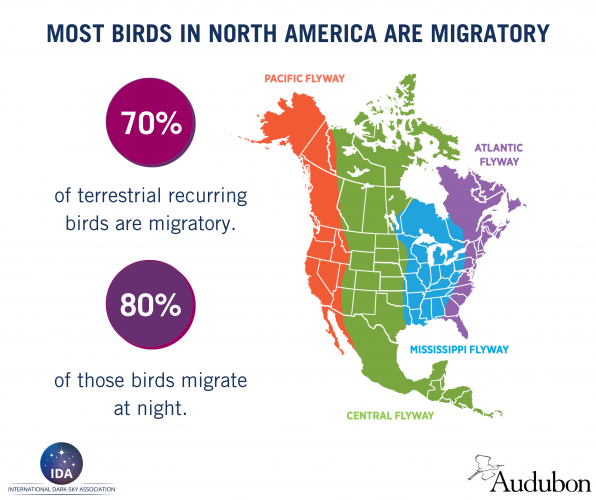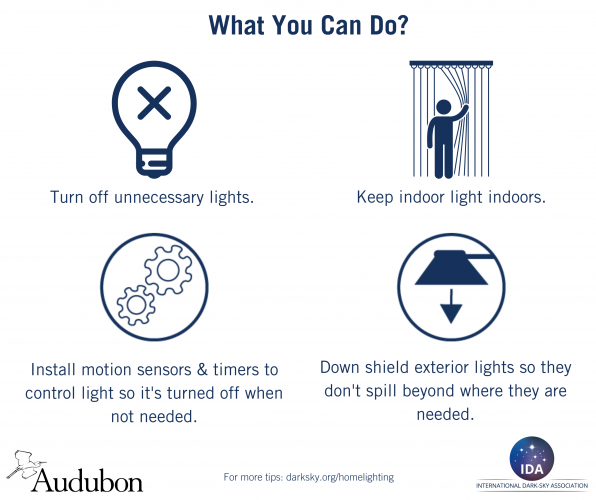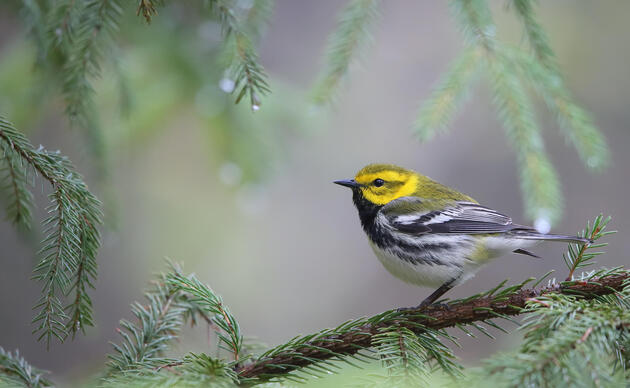Every year around February tens of millions of birds begin their arduous journey back north to their breeding habitats. Most birds fly at night when the air is cooler and the odds of encountering a predator are much lower. However, nights aren’t as dark as they used to be. Due to the artificial lights from cities and houses birds can become incredibly disoriented, often causing them to collide with buildings or windows. Not only are the birds flying into building, but they waste an enormous amount of energy flying around and calling out to their flock when they get distracted by the light, making them weak and unable to finish their journey.

Approximately 388 bird species can be found in Vermont alone, with 32 of them being priority bird species within the Atlantic flyway. As many as 1 billion birds die every year by colliding with buildings. These collisions account for 2-9% of bird mortality in North America. But with our help this number could go down.
Lights Out is a voluntary program found across the country in which volunteers turn off as many non-essential exterior and interior lights to avoid distracting birds. Turning off lights at night not only protects these birds but reduces energy consumption which helps in slowing climate change. Lights Out takes place twice a year since birds migrate south in the fall to their wintering habitat, and north in the spring to their breeding grounds. In the spring we recommend people turn off lights from dusk until dawn from early February through late May, and in the fall, we encourage turning off lights from early September to late November.
The biggest impact of light pollution is caused by developed areas with tall buildings, so although we encourage everyone to participate and help create a safe passage, the real change needs to happen in our towns and cities. Below we include resources you can use to encourage elected officials to adopt this program. Please feel free to contact Audubon Vermont for more information on what you can do.
Here is a list of ways you can contribute to the Lights Out solution:
- Turn off exterior decorative lighting
- Substitute strobe lighting and reduce atrium lighting wherever possible
- Turn off interior lighting as much as possible
- Draw blinds or curtains from dusk to dawn
- Install automatic motion sensors to reduce unnecessary lighting
- Send a Lights Out letter to your local elected official (or start a letter writing campaign). Click on the link below for a sample letter.
- Send a Lights Out letter to your lbuilding manager where you live, work, or go to school (or start a letter writing campaign). Click on the link below for a sample letter.
Sample form letter to Elected Official.
Sample form letter to Building Manager.


By Sofia Benito Alston
Take Action
Sign up for updates about Audubon Vermont's conservation work, get news about our activities and local events, and find out how you can take action to help birds.




